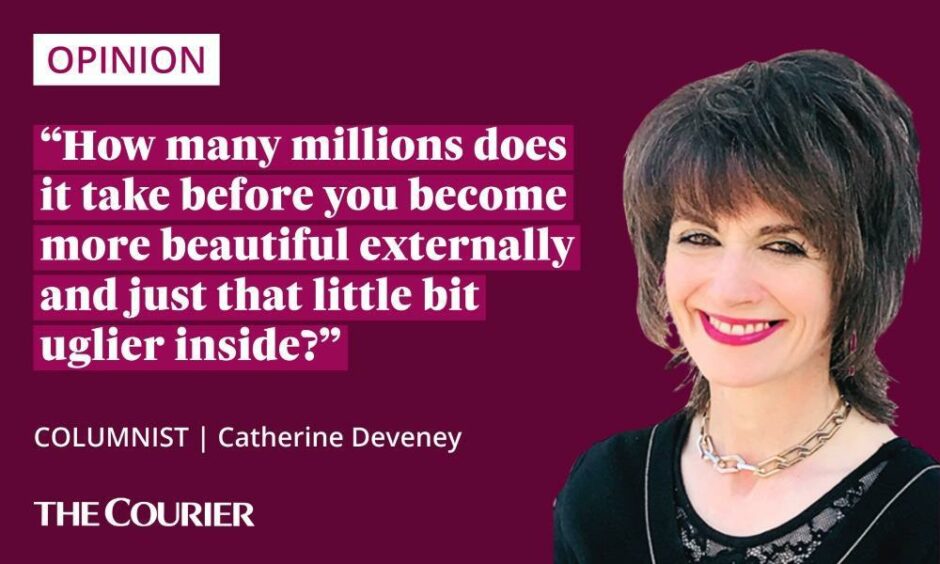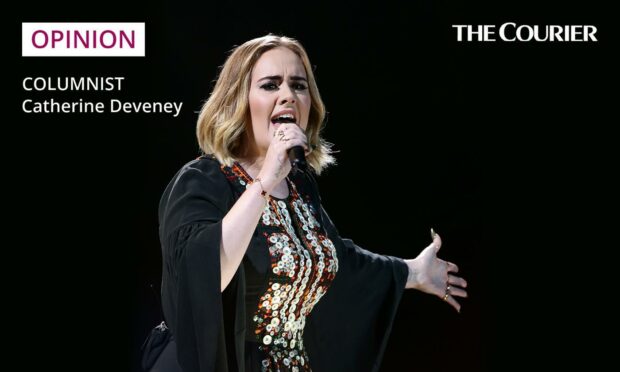There is no doubt that Adele, who makes history this month by simultaneously featuring on the covers of both American and British Vogue, looks like a super-model these days.
She sports kohl-rimmed, feline eyes and sculpted cheekbones; full, arched lips and honey-coloured hair tumbling around her shoulders.
Unrecognisable, in fact, from the Adele I interviewed when she was 21, who sat in a pokey publicist’s office in London, several stones heavier than now, dressed in her pyjamas and a sloppy jumper, her face devoid of make-up.
But I am not so intrigued by what has happened to the outer veneer of Adele, as what has happened inside.

Her appearance is fabulously LA; she would not look out of place in a 1980’s episode of Dynasty.
Adele lives there now, in a three house spread which she refers to as, “very much a British cottage”, which is a bit like classing Buckingham Palace as a small townhouse.
Her London place is very “European” she says dismissively.
“I don’t even want to sit down in it.”
London is too pricey, despite Adele reputedly being worth £131 million.
British Vogue 🇬🇧https://t.co/UgGgfbF6lZ pic.twitter.com/V3p8UcZ7mk
— Adele (@Adele) October 7, 2021
“I looked at houses. It’s like hundreds of millions of pounds. I don’t have that much money at all. I’d throw up,” she said.
Which is kind of how I felt reading her comments.
Adele has left her roots behind
Adele, I remember, seemed down to earth, insecure, funny and swore like a trooper.
She grew up in Tottenham and then Brixton with her mother, who she described as the love of her life.
Her mum was just a teenager when Adele was born, and it was very much them against the world.
Not much money, but plenty of love and support.
Her family had experienced a heroin death, so she understood deprivation.
Which is why not long after that interview, I felt disappointed to read her comments about tax.
“Trains are always late; most state schools are rubbish; and I’ve got to give you, like, 4 million quid. Are you having a laugh?”
Her tax bill, she was quoted as saying, made her “want to go and buy a gun and randomly open fire”, a comment unlikely to endear her nowadays – particularly in LA.
How many millions does it take before you become more beautiful externally and just that little bit uglier inside?
So I wondered, reading her thoughts about houses, at what point on the road to fame do the super-successful separate themselves from their origins, tearing up their roots from the solid earth they grew in?
When do they recalibrate their expectations and demands?
When do they redesign who and what they are?
How many millions does it take before you become more beautiful externally and just that little bit uglier inside?
When does the palace you dreamt of as a child become a mere cottage?
Fame and fortune come at a cost
It was eye-popping enough when MP Sir Peter Bottomley last week described politicians’ salaries of £82,000 as “pretty grim”, while families were falling apart at the removal of £20 from their budget.
Then came Adele.
It was left to Australian comedian and musician Tim Minchin, to provide some sanity about fame and fortune when he wrote about returning to performing after a 10-year absence.
I was worried that this column was rather self-indulgent (it is), but people seem to have really liked it. Which is incredibly nice I gotta say. https://t.co/DTMTy67nPI
— Tim Minchin (@timminchin) October 10, 2021
His departure from the limelight was partly a disturbing recognition about fame: he loved it. He loved the adulation. The booze and the partying.
Most of all, he loved being wanted.
But he also loved his wife and kids.
“You start to believe,” he said, “that you are an entity…And I knew that none of that shit is good for a person.”
Maybe Adele needs to see the bigger picture
There is a tendency these days, to take comments out of context, deliberately misconstruing them, and judging more harshly than necessary.
It’s irritating – and not my intention with Adele.
I also recognise that she has consistently shown empathy for the families involved in the Grenfell Tower fire, visiting personally and encouraging her audiences to raise money for the families of the 72 people who died.
But her thinking needs joined up.
Grenfell Tower was council-owned.
How can you moan about taxes and at the same time demand high standards of health, housing and social accountability?
Given her public comments about Grenfell, it’s hard to credit Adele’s insensitivity about the impossibility of finding a des res in London with enough change from her multi-millions for a crate of Dom Perignon.
What was she looking for – a gold encrusted, Renaissance palace?
Her Vogue interviews make clear Adele has had her fair share of therapy.
How much does it cost, I wonder, for a therapist to lead you gently to a simple truth: the more real you are, the happier you will be internally.
And being real involves remembering who you were before the arrival of your personal trainer and LA lifestyle.
